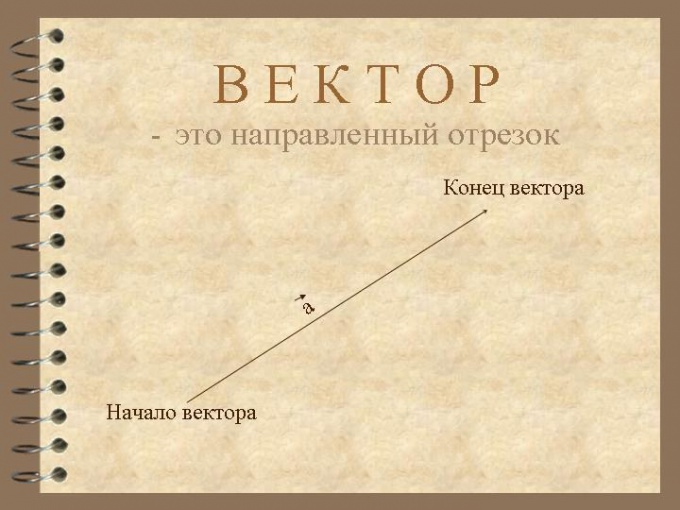You will need
- - definition vector;
- properties of vectors;
- calculator;
- - table Bradis or PC.
Instruction
1
To calculate a vector, knowing its coordinates. To do this, define the coordinates of the beginning and end of the vector. Let them be equal to (x1;y1) and (x2;y2). To make the calculation of a vector, find its coordinates. To do this, from the coordinates of end of vector, subtract the coordinates of its beginning. They will be equal to (x2 - x1;y2-y1). Take x= x2 - x1; y= y2-y1, then the coordinates of the vector will equal (x;y).
2
Determine the length of the vector. This can be done simply by measuring it with a ruler. But if you know the coordinates of the vector, calculate length. To do this, find the sum of squares of coordinates of the vector, and extract the resulting number square root. Then the length of the vector is equal to d=√(x2+y2).
3
Then find the direction vector. To do this, determine the angle α between it and axis OX. The tangent of that angle is equal to the y coordinate of the vector to the x-coordinate of the (tg α= y/x). To find the angle, use the calculator inverse tangent function, table Bradis or PC. Knowing the length of the vector and its direction relative to the axis, it is possible to find the position in space of any vector.
4
Example:
the coordinates of start vector is (-3;5) and the coordinates of the end (1;7). Find the coordinates of the vector (1-(-3);7-5)=(4;2). Then its length will be d=√(42+22)=√20≈4,47 linear units. The tangent of the angle between the vector and the axis OX will be tg α=2/4=0,5. The tangent of this angle is roughly equal to 26.6°.
the coordinates of start vector is (-3;5) and the coordinates of the end (1;7). Find the coordinates of the vector (1-(-3);7-5)=(4;2). Then its length will be d=√(42+22)=√20≈4,47 linear units. The tangent of the angle between the vector and the axis OX will be tg α=2/4=0,5. The tangent of this angle is roughly equal to 26.6°.
5
Find a vector that is the sum of two vectors whose coordinates are known. You should put the corresponding coordinates of the vectors that add up. If the coordinates of the vectors, which are formed, are respectively(x1;y1) and (x2;y2), their sum will be equal to the vector with coordinates ((x1+x2;y1+y2)). If you want to find the difference of two vectors, find the sum, pre-multiplying the coordinates of the vector which is subtracted by -1.
6
If you know the lengths of the vectors d1 and d2, and the angle between them α, find the sum, using the theorem of cosines. To do this, find the sum of the squares of the lengths of the vectors and from the resulting number, subtract twice the product of these lengths multiplied by the cosine of the angle between them. From the numbers, extract the square root. This will be the length of the vector that is the sum of these two vectors (d=√(d12+d22-d1∙d2∙Cos(α)).



